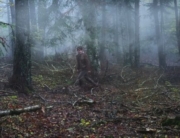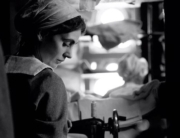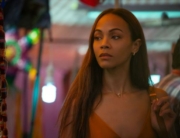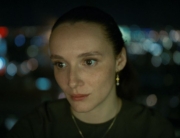Since he broke through with the black comedy Shallow Grave (1994) and with his follow up Trainspotting (1996), eclectic director Danny Boyle has constantly innovated. After directing the 2012 London Olympic ceremony, Boyle has become a British national treasure, so it was with much hype and anticipation that his latest offering, Trance, was released this spring.
During an international fine art auction of Francisco Goya’s painting Witches in the Air, Franck (Vincent Cassel) leads an audacious heist. While tear gas fills the room, chaos erupts, and fine art auctioneer Simon (James McAvoy) rescues the painting from the thieves. While he transports it to safety, flanked by security, Franck confronts Simon, leaving him concussed, and he escapes with the painting only to discover later that the frame is empty.
After his release from hospital, Simon is abducted and tortured by the gang he has duped. Convinced that Simon has no recall of the canvas’s whereabouts, Franck threatens to kill him unless he consults a hypnotherapist. With the help of Harley Street doctor Elizabeth Lamb (Rosario Dawson), Simon endeavors to recover his memory while she has wired his brain to relay their sessions to Franck. By breaking into his mind, Franck expects to expose the double cross. As Simon’s treatment with Elizabeth progresses, the boundaries of hypnotic suggestion begin to blur and the doctor-turned-femme fatale exploits her patient’s “transference,” the redirection of his former emotion onto her.
Structured with flashbacks, hypnotically induced dreams and memories, Trance is visually inventive, shot by his regular collaborator, cinematographer Anthony Dod Mantle (127 Hours, Slumdog Millionaire, Millions, 28 Days Later), with tilted angles and aerial shots, fractured images and reflections.
But high concept and style seems to have sacrificed character and substance in a plot that becomes overly convoluted and stretches the boundaries of clinical possibilities, undermining the narrative and Rosario Dawson’s role. The importance of fine art for McAvoy is not initially set up, nor integrated into the plot, so a scene featuring Dawson and McAvoy that references Goya’s La Maja Desnuda, the first clear depiction of female pubic hair in a Western painting, seems gratuitous. It’s also hard to care for McAvoy as his character recovers as an injured innocent; he turns on a pin into something much darker. Vincent Cassel, a real talent, is ill served by the script. As the plot turns, the hardened criminal appears weak and gullible while the supporting cast of Cassel’s criminal crew come across like incompetent stooges.
Filmed on a tight budget in the far East of London, a former industrialized landscape that is currently undergoing redevelopment, the production design by Mark Tildesley (28 Days Later) seems to compensate with the over-stylized studio set of Franck’s lavish home and the criminals’ hangout. Boyle has always has an ear for a great soundtrack. In Trance, the original music is composed by Rick Smith of the British electronica duo Underworld, a former contributor to Trainspotting and composer for the Olympic ceremony, but the music and the sound mix is surprisingly intrusive and directive.
This neo-noir thematically references Memento and Eternal Sunshine of the Spotless Mind in the play with memory, reality, and fantasy, but Trance lacks the characterization, narrative trajectory, and psychological integrity to bear comparison. Trance, made during the Olympics preparations, perhaps suffers from the director’s split commitments.

















Leave A Comment